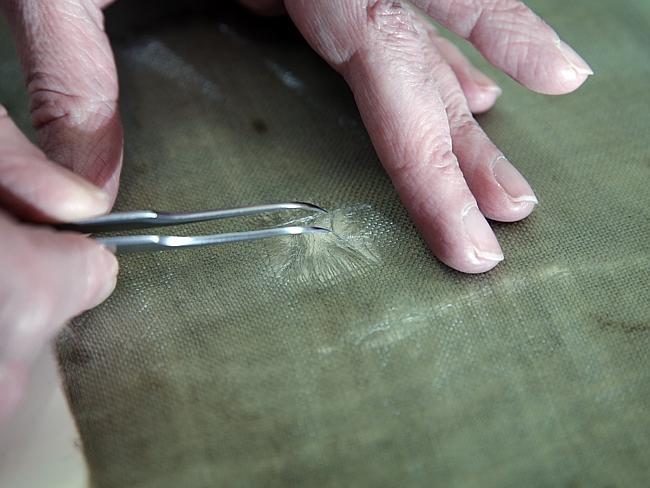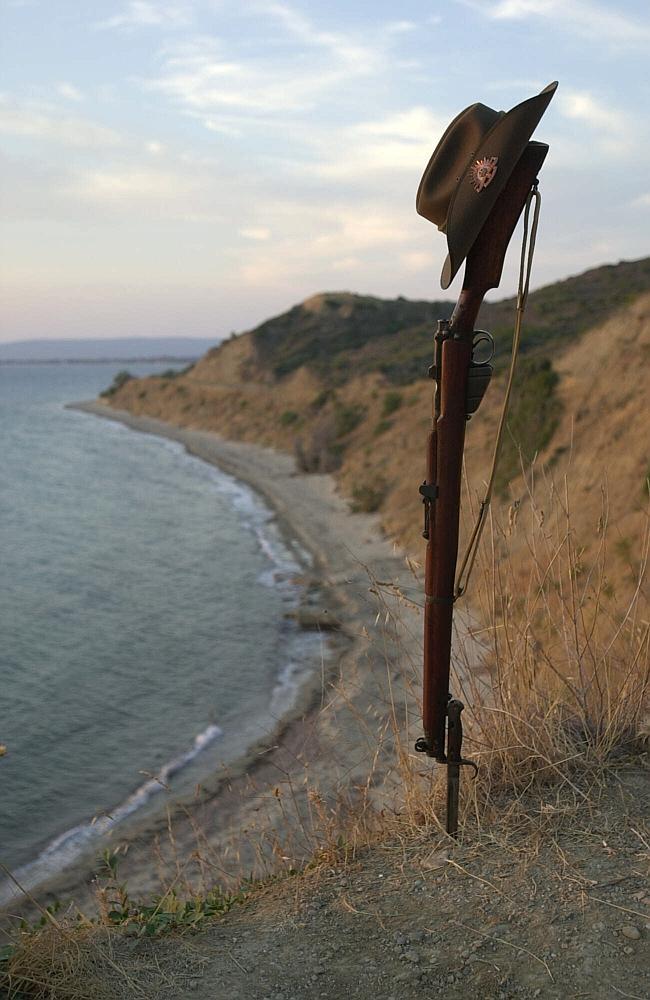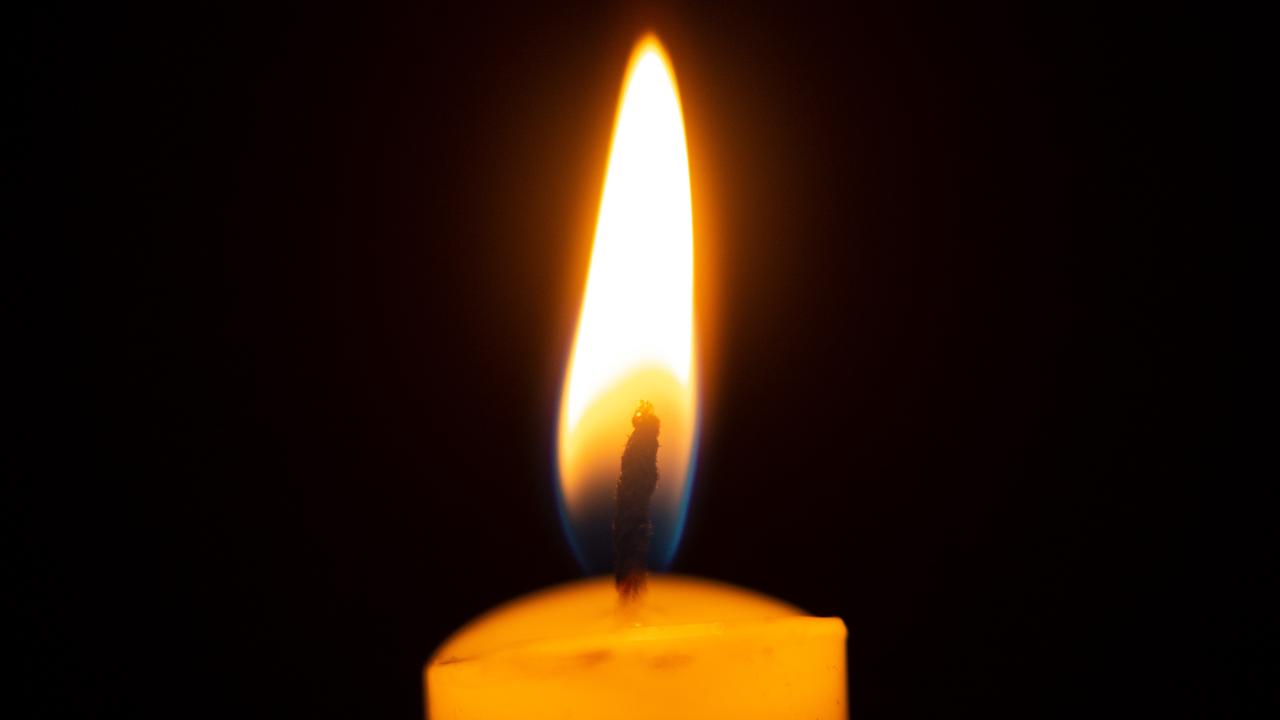First flag of AIF at Gallipoli restored by Imperial War Museum
EXCLUSIVE: The first flag carried by Diggers as they stormed the Gallipoli peninsula restored to be the centrepiece of a WWI display.
ANZAC Centenary
Don't miss out on the headlines from ANZAC Centenary. Followed categories will be added to My News.
IT is badly frayed and faded and heavily stained with blood or grease or both, a small indication of the hell the men who carried it went through.
But despite its condition, its worth cannot be measured as this is the first flag to have been carried ashore by Aussie Diggers as they stormed the Gallipoli peninsula and in so doing gave rise to the Anzac legend.
It’s not clear whether the men from the AIF’s 12th Battalion 3rd Brigade ever had a chance to raise the flag as the rally point for their command, as they were cut down by heavy fire as soon as they touched Turkish soil.
AUSTRALIANS HEAD TO GALLIPOLI FOR ANZAC DAY
GALLIPOLI BALLOT WINNERS BEING NOTIFIED
But the now emblematic banner — believed lost for many decades since that first day of battle 99 years ago — is being painstakingly restored to stand as the centrepiece of a new permanent World War One exhibition at the prestigious Imperial War Museum (IWM) in London.

“The flag is visually exciting and very much tells a story,” IWM First World War gallery lead curator Paul Cornish said.
“Tens of thousands of soldiers died under the flag as it were and once they got it to shore it was to go on battalion headquarters. It would have been a rally point flag … it’s not clear whether they managed to fly it. It was the first battalion on shore and it was their jobs to screen the rest of the landings so it’s a flag the museum would have wanted even if it didn’t come to us by chance, it’s significant not least of all as it is the brigade flag that has Australia setting foot on enemy territory.”
The flag was collected by an English soldier from the 29th Division who fought alongside the Anzacs. It was not seen again for 75 years before relatives in England found it and donated it to the museum in 1990. The IWM has tens of thousands of items in its repositories but chose the flag to display in its multi-million dollar refurbishment of its 1100sqm gallery reopening in time for WWI commemorations in July.
Mr Cornish said it was important to tell a story to future generations who can no longer benefit from anecdotes passed on from grandads or great grandads.
“This tells a very obvious story about the Australia and New Zealand Army Corps entry into the war. Gallipoli was obviously the start of that whole process, the emergence of the nation, and of course the Australians pop up again in the section of the gallery to do with the Somme, another important element for Australia.”

Specialist textile curator Liz Rose is painstakingly fixing the flag for display, placing see-through conservation net over tears in the fabric that threaten to pull the flag apart. The process takes several days.
But she says she is careful not to restore it to its former glory. Even the dodgy stitching of an unknown repairer from some time in the past century to patch a hole is being left alone.
“We just want to repair it in parts to preserve and display but its condition is evidence of its history and that is important to maintain,” she said.
The 12th Battalion was raised within three weeks of the declaration of war in August 1914 with half the battalion soldiers recruited from Tasmania. They were the covering force for the Anzac landings and so were the first onshore at 4.30am on April 25, 1915. Their commander Lt Col L.F Clarke was killed by a sniper in the first few hours of battle but the battalion fought on and would later contribute two companies to the attack on Lone Pine; the only battalion in the brigade to do so. The battalion heroes were also the last to leave Anzac Cove only to go on to take part in the first major action in France in the Somme valley at Pozieres, then Ypres in Flanders all the way through to the battle of Amiens in August 1918.
Of their Gallipoli campaign, a British officer there at the time wrote: “The Australians were fine. ... They pulled in singing a song, ‘Australia will be there!’ and I could see them scaling the cliffs”. Within five days of the campaign, over half the men of the 12th battalion would be killed or wounded. They fought with the motto Ducit Amor Patriae (Love of My Country Leads Me).
Other Australian exhibits in the new WWI galleries of the IWM, which one million people a year are expected to visit, include a German P08 pistol seized in Palestine by a Queenslander from the 5th Light Horse Brigade Regiment who then had the handle decoratively carved by a Turkish prisoner of war, parts of the Manfred von Richthofen’s (Red Baron) biplane shot down by Australian ground troops, original recruitment posters, uniforms and trench signs including one for Mouquet Farm known by the Diggers as “Mucky Farm” near Pozieres and the scene where in just six weeks Australia suffered 7000 dead, almost as many as eight months in Gallipoli. There are also photographs taken by Australian official war photographer Frank Hurley.



